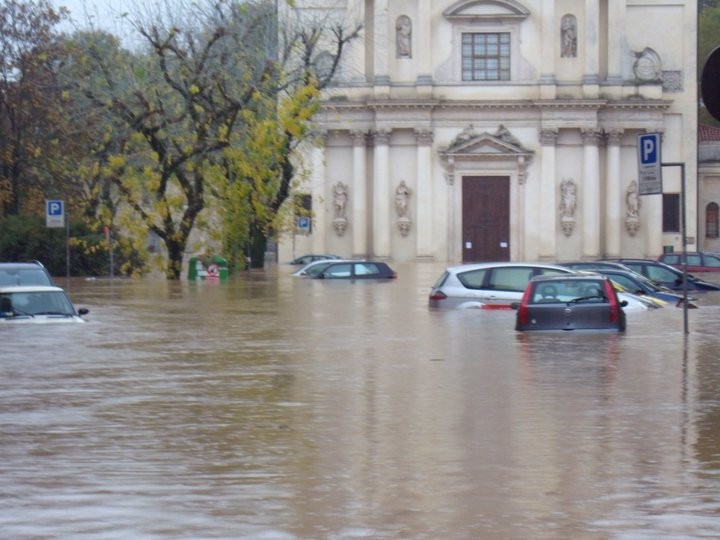
The floods of recent weeks have sparked a debate about prevention and reconstruction costs in Italy. Who pays for the disaster? What insurance coverage and state funds are provided? We try to clarify the situation with the help of some experts.
More than 90% of Italian territory is at risk
The Sicilian disaster leads us to reflect on the conditions of the Italian territory and on the state of the buildings and infrastructural heritage. It’s estimated that more than 90% of the national territory is at risk of damage from flooding, with over 3 million families potentially affected, according to Ispra.
"We see climate change manifested in rain of increasingly disproportionate concentrations, in a territory without extraordinary or even ordinary maintenance, inevitably bringing disasters such as those that occurred in recent days in Sicily,” says geologist Fabio Tortorici, President of the Centre of Studies for the National Council of Geologists (Centri Studi Consiglio Nazionale dei Geologi). “The poor health of our territory promotes reflection and action to counteract the phenomenon of hydrogeological instability. Italy is the European nation with the greatest number of landslides – 15 percent of the population lives in areas with a high probability of floods and landslides.”
Too many landslides and floods, not enough action
The basic problem is the flippancy with which houses are built in high-risk areas, endangering the lives of thousands of people. This light and breezy touch often starts from the local administrations themselves, which don’t deploy adequate resources to handle the situation, turning every light drizzle into an emergency.
"The Casteldaccia building, where nine people lost their lives," recalls Tortorici, "is located in an area known to have a high hydraulic risk, as are many other buildings throughout Italy. Unfortunately, the lack of knowledge of geological phenomena is the main reason and we still don’t understand that to mitigate natural hazards, we need to bring technical and scientific skills to the field that can prevent avoidable disasters. At this rate, we will inevitably continue to move from one emergency to another: earthquakes, landslides, droughts, floods".
ItaliaSicura’s unused billion
There is also the question that follows every disaster: who pays? At the state level, the resources deployed in the field for the prevention of seismic and hydrogeological risks are limited to 300 million euro per year, especially after the closure of the Italia Sicura program last July with Decree-Law No.86/2018, which made more than a billion euro available from the European Investment Bank to intervene on landslides and erosion. Now that fund has been closed down, it falls to other means to finance damages from flooding, but the Environment Minister Costa said he did not want to put his hand into the treasury for this emergency.
Does home insurance provide cover for bad weather?
The worst victims of these meteorological disasters are the families living through hardship who see their homes destroyed and their lives collapse. Who will pay for the damage caused by these disasters? Home insurance coverage is available to protect against seismic risk.
"In the last twelve months, certainly also due to the dramatic news events that we have witnessed in our country, the interest in Italy in insurance coverage that protects against damage from hydrogeological or natural disasters has increased significantly,” reports Lodovico Agnoli, new business manager of Facile.it. “It is important to consider that this cover is usually included in larger products that protect the home, its structure, the goods contained therein and even residents or tenants.”
There are two types of home insurance for this, which can be contracted by both owners and tenants in the property: the first is linked only to the contents of the house (the cost of which is determined by the value of the objects kept in the property); the second deals with structural damage (the cost of which depends on the type of property, its location and whether or not it is a main residence). In addition, the 2018 Budget Law extended the 19% income tax return deduction to house insurance.
When home insurance doesn’t cover the risk of flooding
"In order to avoid unpleasant surprises,” Agnoli warns, “it is advisable to base your choice of home insurance not only on the price of the premiums, but also on how the policy corresponds to your needs. Read carefully, for example, which clauses involve the non-recognition of the indemnity and, also, what deductibles are applied to the compensation."
It’s worth noting that not all home insurance covers seismic and hydrogeological risks. Pay attention to the exclusion clauses: buildings that have already been damaged in the past or that are too close to church belfries are often excluded from coverage.
Finally, as with any insurance, no compensation will be paid for damage in the event of wilful misconduct or negligence. An important question would then arise as to the liability of an unauthorised or condemned building. This situation is anything but rare if you consider that, according to Legambiente, 71,450 properties in Italy are affected by demolition orders but more than 80% are still standing.
All this adds up to a tense situation as winter approaches and people living in areas of Italy at risk of flooding and other disasters prepare for the worst.